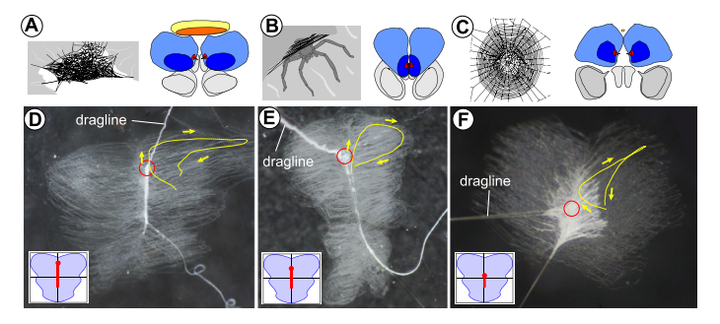Evolution of aerial spider webs coincided with repeated structural optimization of silk anchorages

Abstract
Physical structures built by animals challenge our understanding of biological processes and inspire the development of smart materials and green architecture. It is thus indispensable to understand the drivers, constraints, and dynamics that lead to the emergence and modification of building behavior. Here, we demonstrate that spider web diversification repeatedly followed strikingly similar evolutionary trajectories, guided by physical constraints. We found that the evolution of suspended webs that intercept flying prey coincided with small changes in silk anchoring behavior with considerable effects on the robustness of web attachment. The use of nanofiber based capture threads (cribellate silk) conflicts with the behavioral enhancement of web attachment, and the repeated loss of this trait was frequently followed by physical improvements of web anchor structure. These findings suggest that the evolution of building behavior may be constrained by major physical traits limiting its role in rapid adaptation to a changing environment.
Citation
Wolff, J. O., Paterno, G. B., Liprandi, D., Ramírez, M. J., Bosia, F., Meijden, A., Michalik, P., Smith, H. M., Jones, B. R., Ravelo, A. M., Pugno, N., & Herberstein, M. E. (2019). Evolution of aerial spider webs coincided with repeated structural optimization of silk anchorages. Evolution, 73(10), 2122–2134. https://doi.org/10.1111/evo.13834